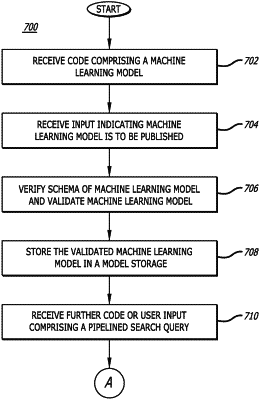| CPC G06N 20/00 (2019.01) [G06F 16/245 (2019.01); G06F 18/2148 (2023.01); G06N 3/08 (2013.01); G06N 5/025 (2013.01); G06N 5/04 (2013.01)] | 20 Claims |

|
1. A computer-implemented method, comprising:
identifying a sequence of operators forming at least a portion of a pipelined search query, wherein the sequence of operators includes a source operator, a first operator, a second operator, and a destination operator, wherein a set of data or results produced through execution of the first operator is provided as input to the second operator, wherein the source operator is associated with a collection of data for the query and the destination operator is associated with providing resultant data generated by the pipelined search query to a destination, and wherein the second operator is configured to perform operations, in accordance with a machine learning component, on data received as the input based on execution of the first operator;
identifying a pipeline fragment including the first operator and the second operator;
retrieving an input schema and an output schema associated with the machine learning component from metadata stored in non-transitory storage medium;
determining compatibility between an output schema associated with the first operator and the input schema associated with the machine learning component; and
storing a representation of the pipeline fragment in a data store for subsequent use.
|